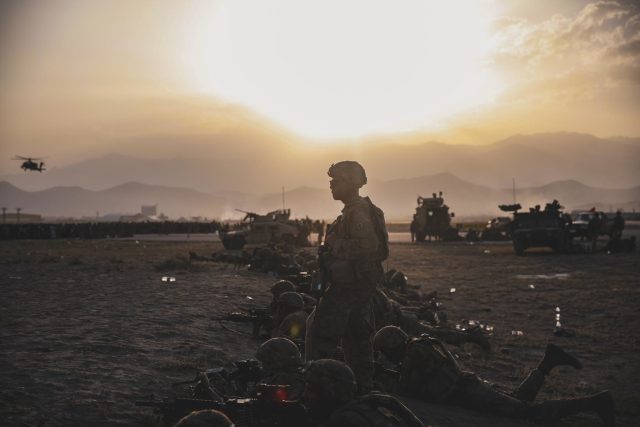The US State Department released 24 pages of its 85-page After Action Review (AAR) report Friday on the controversial US withdrawal from Afghanistan. The remaining 61 pages of the report are still classified.The AAR states that, “Many observers had long predicted that the withdrawal of U.S. military forces and those of our allies and partners would precipitate the collapse of the Afghan government and its security forces but estimates as to how long this might take varied.” However, the report goes on to state, that “does not mean the Department and the interagency could not have been better prepared for a worst-case scenario, especially when it came to planning for a noncombatant evacuation operation (NEO) with the potential to expand into a large humanitarian airlift.”The report primarily focuses on the impacts of the overall viability of the Afghan government, the impact of Covid-19, agency turnover and the lack of Senate-confirmed officials in embassies and the State department more generally. The AAR concludes:Under both the Trump and Biden Administrations, the State Department faced the enormous challenge of maintaining a large diplomatic and assistance mission in Kabul despite the impending withdrawal of U.S. forces that provided critical security, intelligence, and life support functions…In examining these efforts spanning two administrations, the AAR team was struck by the differences in style and decision making, most notably the relative lack of an interagency process in the Trump administration and the intense interagency process that characterized the initial period of the Biden Administration.White House Press Secretary Karine Jean-Pierre defended President Biden’s role in the withdrawal, saying:He had to make a tough decision. Right? In the beginning of his administration, he had to make a tough decision on what to do with the nation’s — with the nation’s longest war — right? — where we were seeing, you know, billions of dollars go into a war that had no end in sight, where our — our members of the military were put at risk.Steven Cheung, a spokesman for former President Trump, told Reuters, “There’s only one person responsible for the disastrous pullout of Afghanistan — Joe Biden.”There have been two previous reports released detailing the events of the withdrawal, as well as where the blame for the fallout may lie. The first, released by the White House, placed the blame squarely at the feet of Trump, saying, “President Biden’s choices for how to execute a withdrawal from Afghanistan were severely constrained by conditions created by his predecessor.” The second report, reviewed by the Washington Post and compiled by the Department of Defense, mainly blamed leadership’s inability to listen and respond to military personnel on the ground. It did not specify who was in leadership or which administration’s leadership was in question.The US war in Afghanistan was one of the longest in US history, spanning from 2001 until 2021. The withdrawal in 2021 has been largely criticized due to its chaotic nature, which lead to the deaths of 13 service members and a panicked run on the Kabul airport by those looking to flee the country as the Taliban took power. Since the withdrawal, the Taliban has taken control of the country, with the United Nations (UN) raising concerns over a worsening human rights crisis fueled by an economic crash and US sanctions.




The Most Read
Сryptocurrencies
Bitcoin and Altcoins Trading Near Make-or-Break Levels
Financial crimes
Thieves targeted crypto execs and threatened their families in wide-ranging scheme
Financial crimes
Visa Warning: Hackers Ramp Up Card Stealing Attacks At Gas Stations
News
Capitalism is having an identity crisis – but it is still the best system
Uncategorized
The 73-year-old Vietnamese refugee is responsible for bringing Sriracha to American consumers
Uncategorized
Electric Truckmaker Rivian, Backed By Amazon, Ford, Raises Whopping $1.3 Billion